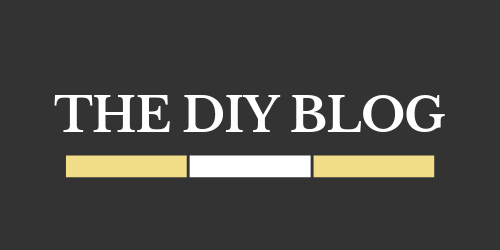Experts define social drinking by its lack of negative consequences and its place within a balanced lifestyle. To test alcohol’s effects during group formation in real-time, we used the Facial Action Coding System (FACS; Ekman, Friesen, & Hager, 2002). FACS identifies facial expressions, or action units, thought to relate to emotion (Ekman & Rosenberg, 2005), and is the most reliable and comprehensive facial coding system. [The Duchenne smile involves contraction of both the zygomaticus major (raising the corners of the mouth) and orbicularis oculi (raising the cheeks and producing crow’s feet around the eyes) muscles, whereas a non-Duchenne-smile involves only contraction of the zygomaticus major muscle].
Tips for Selecting Treatment
Wilson’s TRT research was influenced by several factors drawn from experimental psychology. He entered the alcohol field already an established leader in the burgeoning behavior therapy movement, and in particular he was a persuasive advocate for social learning theory (subsequently recast as cognitive social learning theory). From a social learning perspective, drinking offers a way of coping with life’s demands that can become maladaptive if excessively used (Abrams & Niaura, 1987). Like Marlatt (e.g., Marlatt, 1978), Wilson was interested in the theories and research of Walter Mischel (1968), and especially of Albert Bandura (e.g., Bandura, 1969; 1977; 1986). Alcohol use was thought to be reinforced differentially according to the circumstances surrounding consumption, which was a departure from prior TRT formulations that targeted more narrowly the pharmacological properties of ethanol.
- At the same time, alcoholism is a true health condition that involves physical alcohol dependence.
- The May 20 alert said that more than 70 percent of the water systems inspected by the EPA failed to meet basic security requirements set out in the Safe Drinking Water Act, with inspectors finding “alarming cybersecurity vulnerabilities at drinking water systems across the country.”
- To test alcohol’s effects during group formation in real-time, we used the Facial Action Coding System (FACS; Ekman, Friesen, & Hager, 2002).
- As noted by Curtin and Lang (2007), there is a need to investigate the effects of alcohol on the various components of emotional responding, including “response threshold, peak intensity, duration, subsequent regulatory processes”) (p. 207).
Ask Amy: My friend is lying about their drinking problem and I’m worried
A meta-analytic review documenting links between adolescent/young adult solitary drinking and negative psychosocial problems, drinking to cope motives, and increased alcohol use and problems. If you feel as though your social drinking or that of a loved one has lead to alcohol abuse, treatment is available. At Gateway, our evidence-based alcohol addiction programs offer hope and healing. You may start as a social drinker and slowly become a problem drinker as you begin to consume more alcohol. Instead of drinking as a social activity, problem drinkers spend a lot of time drinking alone.
The pandemic may have created a nation of problem drinkers — and many are women – CNN
The pandemic may have created a nation of problem drinkers — and many are women.
Posted: Sat, 22 Jan 2022 08:00:00 GMT [source]
Treatments Led by Health Professionals
- To address this, raising alcohol taxes, even by a small amount, can be an effective deterrent.
- When alcohol becomes a daily habit, we find ourselves slipping further down the pit.
- More broadly, as research has accumulated, the initial effects of placebo beverages to reduce anxiety have been hard to replicate (Greeley & Oei, 1999).
Three medications are currently approved in the United States to help people stop or reduce their drinking and prevent relapse. They are prescribed by a primary care physician or other health professional and may be used alone or in combination with counseling. Alcohol-related problems—which result from drinking too much, too fast, or too often—are among the most significant public health issues in the United States. After more than a year in relative isolation, we may be closer than we’d like to the wary, socially clumsy strangers who first gathered at Göbekli Tepe. Over the decades, scientists have proposed many theories as to why we still drink alcohol, despite its harms and despite millions of years having passed since our ancestors’ drunken scavenging.

Phase 4: Way of Life—When the Feet Are Trapped and the Wings Are Covered by Syrup
Empirical studies show that targeted alcohol marketing results in individuals developing positive beliefs about drinking, and creating and expanding environments where alcohol use is socially acceptable and encouraged (Alaniz and Wilkes 1998; Hastings et al. 2005; McKee et al. 2011). These factors can result in the onset of drinking and binge drinking, and in increased alcohol consumption (Tanski et al. 2015). Much experimental research examining the moderating influence of personality on the effects of alcohol has tested social drinking participants in isolation (e.g., Sayette et al., 2001b; though see; Sher & Walitzer, 1986).
In the years since, they have argued that religion helped humans cooperate on a much larger scale than they had as hunter-gatherers. Belief in moralistic, punitive gods, for example, might have discouraged behaviors (stealing, say, or murder) that make it hard to peacefully coexist. In turn, groups with such beliefs would have had greater solidarity, allowing them to outcompete or absorb other groups. Our team is available to guide you through the steps of assessing your insurance coverage for addiction treatment. Social drinking, when done responsibly and in moderation, can have both benefits and risks to an individual´s well-being. At any moment, someone’s aggravating behavior or our own bad luck can set us off on an emotional spiral that threatens to derail our entire day.
Ultimately, a broad range of drinking behavior sequences may prove optimal.] Research also is needed to revisit the conditions under which alcohol may exacerbate a stress response (perhaps through impaired coping efforts). This issue has emerged in various theories (Curtin et al., 1998; Sayette, 1993a; Steele & Josephs, 1988), but there likely is benefit to systematic investigation of this phenomenon. In critiquing the extant TRT literature, Wilson observed that much of the research to date had ignored cognitive expectancy factors. The cognitive revolution that swept across psychology in the 1970s had begun Social Drinking and Drinking Problem to influence psychopathology research, including addiction (see Sayette, 1999b; Tiffany, 1991; Wilson, 1987a). Along with Marlatt (e.g., Marlatt, 1976; 1978), Wilson argued that one’s beliefs about the effects of alcohol, developed over time through both direct and vicarious experiences, materially influenced the impact of drinking on anxiety. He proposed that these cognitive expectancies regarding the anticipated effects of alcohol would necessarily vary across individuals as a result of their social learning histories, and within individuals would differ across settings and times (Wilson, 1978).
Medical and non-medical addiction specialists
Although most social drinkers don’t become alcoholics, there are risks involved. People with unhealthy alcohol use (also called alcohol use disorder or AUD) can’t always predict how much they will drink, when they will stop, or what they will do while drinking. And it can be common for people with alcohol use disorder to deny the negative effects of drinking or that they even have a problem.

